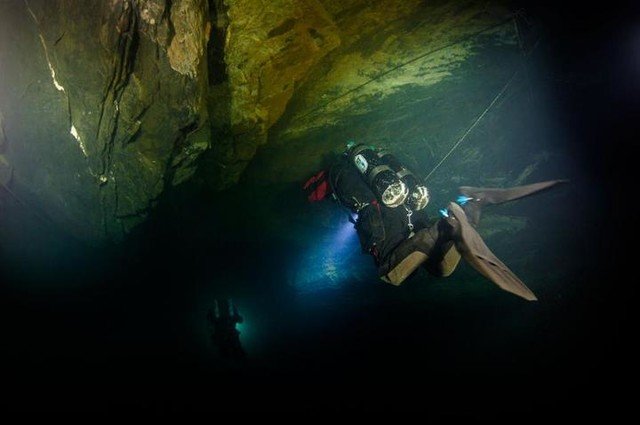Scientists Discover the Longest Underwater Cave in the World
A group of scientists have recently discovered an underwater cave that is believed to be the longest in the world. Interestingly, the findings are located in eastern Mexico is also revealed some ancient Mayan artifacts artifacts.
Launched from Mirror.co.uk page, the discovery is the result of a diving project titled Gran Acuifero Maya (GAM). This project is dedicated to researching and preserving the underground waters of the Yucatan peninsula of Mexico.
For nearly 14 months, the diving entourage explores a giant underwater maze shaped like a canal.
When it reached the surrounding area of the Tulum Beach resort district, related researchers discovered a cave system known as Sac Aktun, measuring 263 kilometers, connected to the 83-kilometer-long Dos Ojos system, GAM said in a statement. Because of that, Sac Aktun now buffers Dos Ojo.
The director of GAM who is also an underwater archaeologist, Guillermo de Anda, said that this 'amazing' discovery will help understand the cultural development of the related region, a culture rich in Mayan civilization before conquest by the Spanish Nation.
"This discovery makes us appreciate more clearly, how the rituals are run, the pilgrimage sites and most of all, the great pre-Hispanic settlements we know of, are now emerging," Guuillermo said
The Yucatan Peninsula, the location of related discoveries, has long been known as one of the ancient sites of the discovery of Mayan sites.
In this area also found the Mayan city layout system built with an extensive network of sewers. This network is connected with underwater waters known as cenotes.
Ancient Mayans Build City with SIstem Bottom Water Canal
Earlier in 2015, the same team of scientists managed to find a cenote under the Kulkulcan Pyramid.
"After passing the ossuary, we enter a cave beneath the building (Kulkulcan Pyramid) Inside, we find a closed road, seemingly closed by the ancient Mayans themselves," De says.
Some researchers suspect, cenotes in the pyramids of Mayan civilization are often used by local ancient tribes to perform human sacrifice ceremonies.
The allegation was strengthened after researchers found human bones in another cenote in the Chichen Itza region.
Some cenotes are said to have certain religious values for the Maya. The belief is even believed to be the descendants who live in the modern era now.
Refernece:
